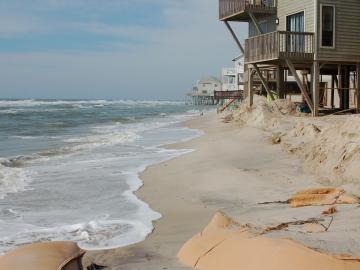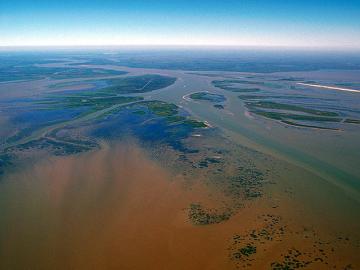
Filter News
Area of Research
News Type
News Topics
- (-) Advanced Reactors (5)
- (-) Big Data (25)
- (-) Bioenergy (18)
- (-) Biology (18)
- (-) Biomedical (13)
- (-) Environment (35)
- (-) Grid (13)
- (-) Space Exploration (4)
- 3-D Printing/Advanced Manufacturing (28)
- Artificial Intelligence (35)
- Biotechnology (8)
- Buildings (18)
- Chemical Sciences (16)
- Clean Water (4)
- Composites (6)
- Computer Science (48)
- Critical Materials (4)
- Education (2)
- Emergency (2)
- Energy Storage (11)
- Exascale Computing (26)
- Fossil Energy (3)
- Frontier (20)
- Fusion (10)
- High-Performance Computing (35)
- Hydropower (1)
- Isotopes (12)
- ITER (1)
- Machine Learning (18)
- Materials (16)
- Materials Science (24)
- Mathematics (5)
- Mercury (1)
- Microelectronics (1)
- Microscopy (6)
- Nanotechnology (3)
- National Security (30)
- Neutron Science (24)
- Nuclear Energy (19)
- Partnerships (24)
- Physics (11)
- Polymers (3)
- Quantum Computing (16)
- Quantum Science (22)
- Security (7)
- Simulation (18)
- Statistics (2)
- Summit (16)
- Transportation (7)
Media Contacts
Researchers at ORNL recently demonstrated an automated drone-inspection technology at EPB of Chattanooga that will allow utilities to more quickly and easily check remote power lines for malfunctions, catching problems before outages occur.

Jeremiah Sewell leads a team at ORNL, working on xenon-129 production for lung imaging. Reflecting on his career, Sewell views each opportunity as a "door" he steps through, leveraging over 25 years of experience in nuclear power and centrifuge operations to advance the facility’s mission.

Debjani Singh, a senior scientist at ORNL, leads the HydroSource project, which enhances hydropower research by making water data more accessible and useful. With a background in water resources, data science, and earth science, Singh applies innovative tools like AI to advance research. Her career, shaped by her early exposure to science in India, focuses on bridging research with practical applications.

A study found that beaches with manmade fortifications recover more slowly from hurricanes than natural beaches, losing more sand and vegetation. The researchers used satellite images and light detection and ranging data, or LIDAR, to measure elevation changes and vegetation coverage. Changes in elevation showed how much sand was depleted during the storm and how much sand returned throughout the following year.

The world’s fastest supercomputer helped researchers simulate synthesizing a material harder and tougher than a diamond — or any other substance on Earth. The study used Frontier to predict the likeliest strategy to synthesize such a material, thought to exist so far only within the interiors of giant exoplanets, or planets beyond our solar system.

Researchers at the Department of Energy’s Oak Ridge National Laboratory and partner institutions have launched a project to develop an innovative suite of tools that will employ machine learning algorithms for more effective cybersecurity analysis of the U.S. power grid.

Power companies and electric grid developers turn to simulation tools as they attempt to understand how modern equipment will be affected by rapidly unfolding events in a complex grid.

Brian Sanders is focused on impactful, multidisciplinary science at Oak Ridge National Laboratory, developing solutions for everything from improved imaging of plant-microbe interactions that influence ecosystem health to advancing new treatments for cancer and viral infections.

In the wet, muddy places where America’s rivers and lands meet the sea, scientists from the Department of Energy’s Oak Ridge National Laboratory are unearthing clues to better understand how these vital landscapes are evolving under climate change.

When Oak Ridge National Laboratory's science mission takes staff off-campus, the lab’s safety principles follow. That’s true even in the high mountain passes of Washington and Oregon, where ORNL scientists are tracking a tree species — and where wildfires have become more frequent and widespread.


